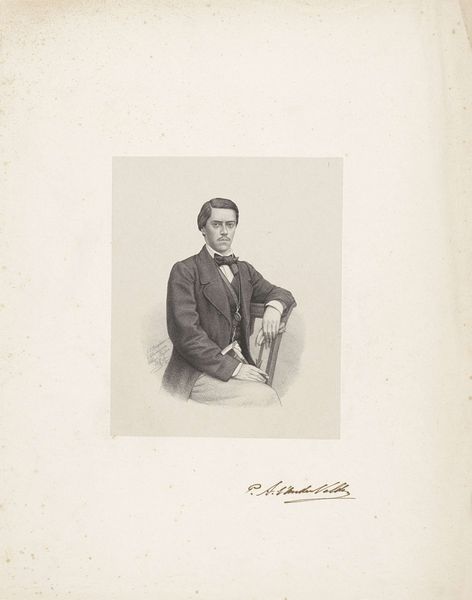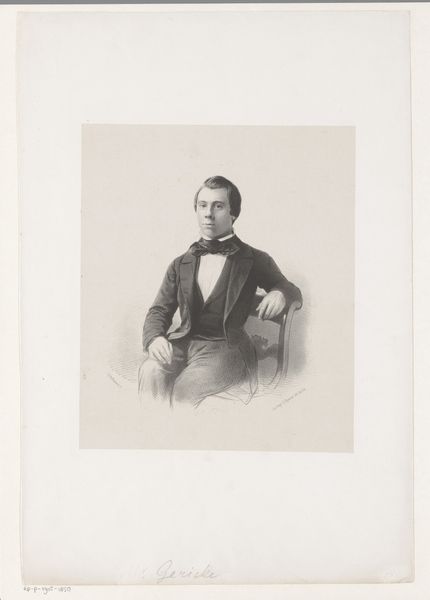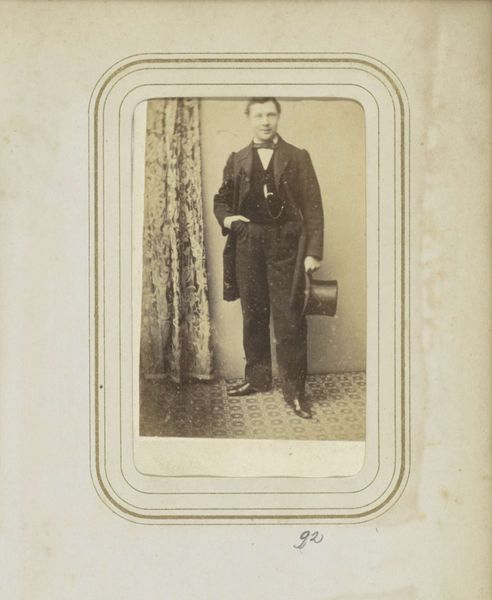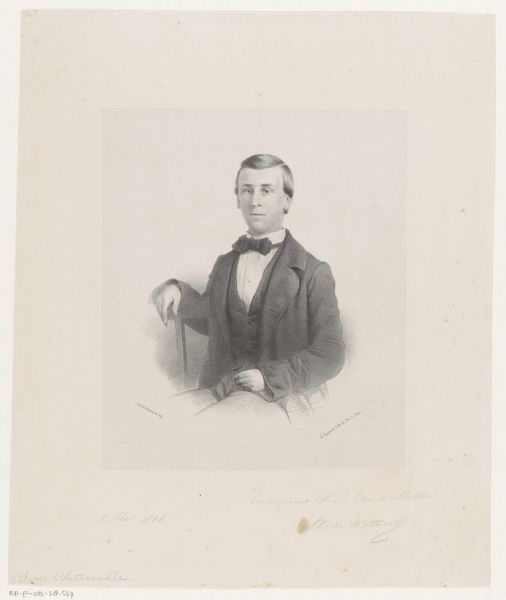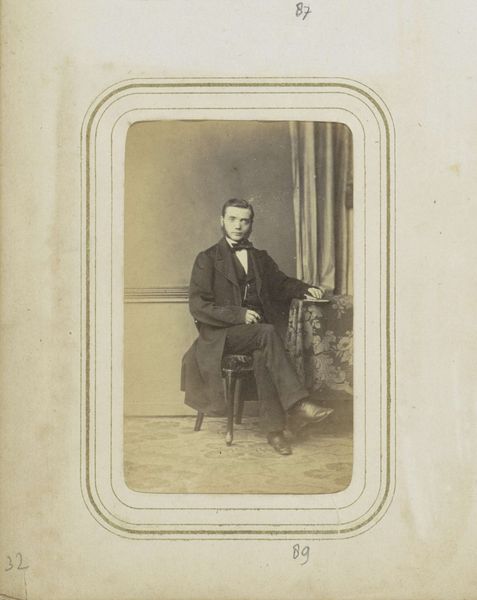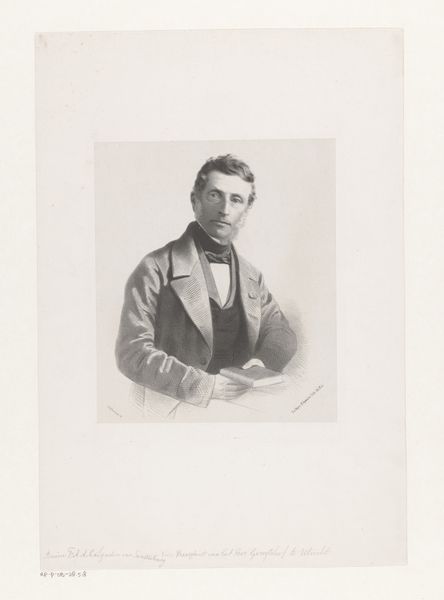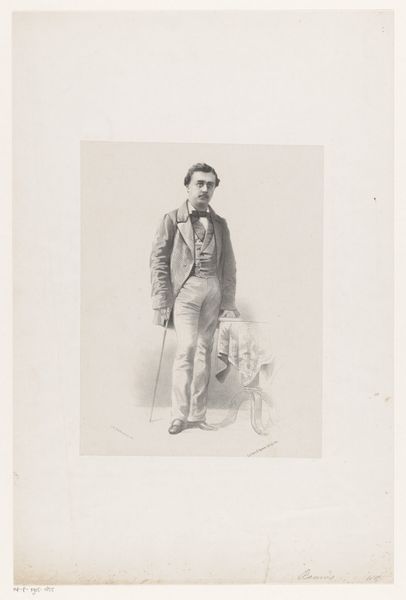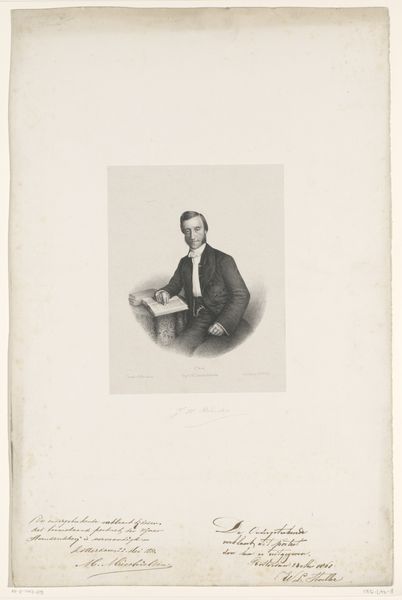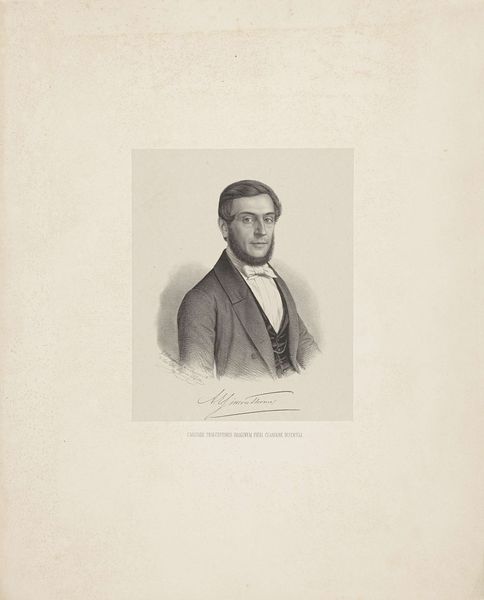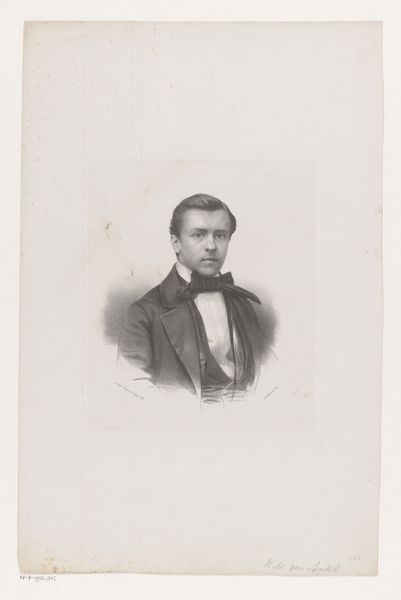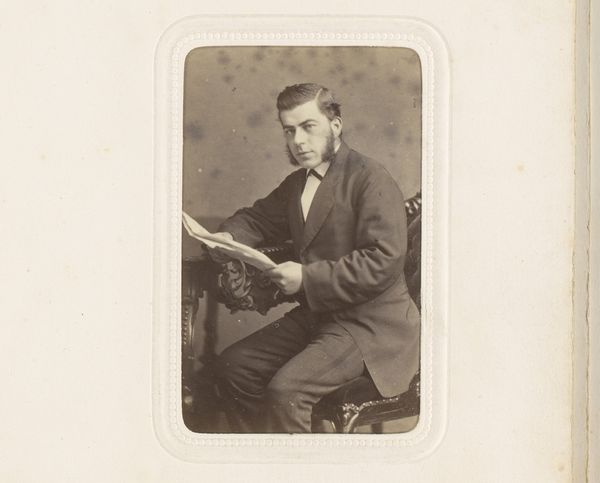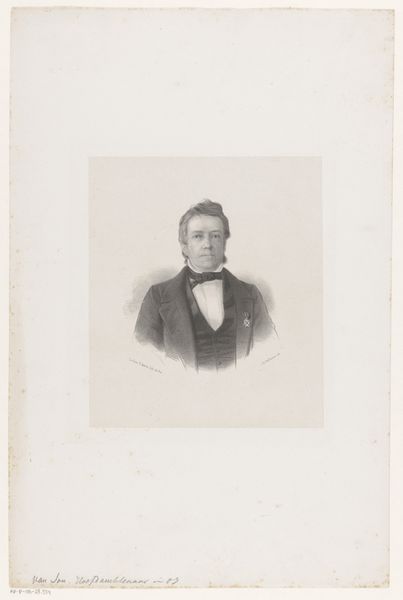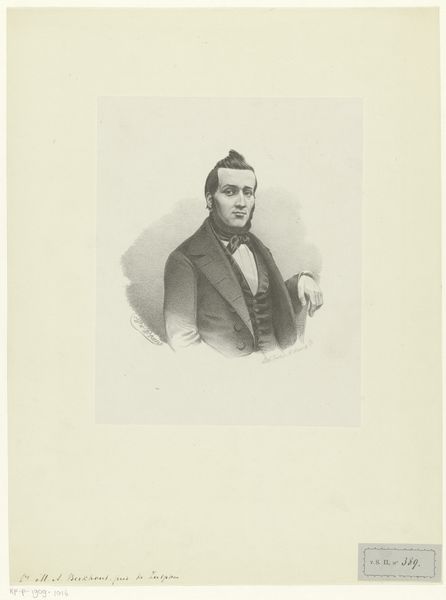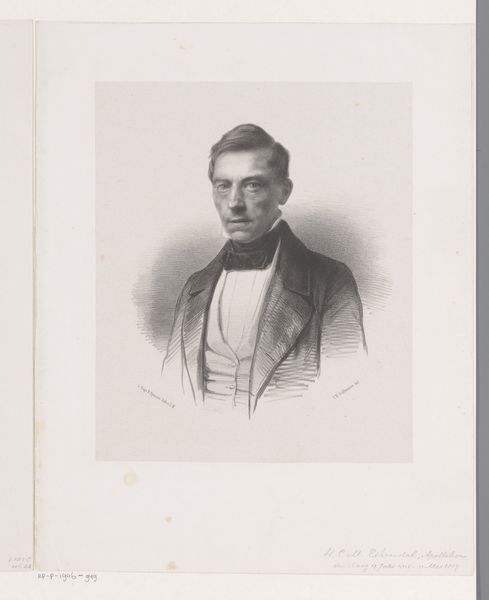
print, engraving
#
portrait
#
pencil drawn
#
aged paper
# print
#
pencil sketch
#
old engraving style
#
historical photography
#
engraving
#
realism
Dimensions: height 445 mm, width 371 mm
Copyright: Rijks Museum: Open Domain
Curator: This engaging print, housed here at the Rijksmuseum, is titled "Portret van een onbekende man," and is thought to date from around 1853-1854. The engraver is Johann Peter Berghaus. Editor: It's interesting how this image of a man from over a century ago remains somewhat striking. The use of engraved lines give it a unique feel, there’s a weightiness to the lines forming his attire but a softness to his face. Curator: Indeed, that contrast is well-observed. Consider that engravings, particularly portraits like this, served a vital social function then. They allowed for a wider distribution of likenesses than painting allowed, impacting public perceptions of identity and status. How do you read that role of portraits in this work? Editor: I think you make a compelling argument for that. It looks to me like the image employs the engraver's skills quite remarkably to create what appears to be a certain vision of idealized bourgeois respectability: well-tailored clothes, proper posture, with soft facial features that would still give the model an air of seriousness. It suggests something about the society's ambition, its class desires. The materiality speaks to accessibility but also refinement. Curator: I see your point about accessibility and refinement. This would have been produced in multiple iterations, demonstrating that the labor involved and how such imagery can play a role in disseminating ideals across social strata. And thinking more about Berghaus, the engraver, we could discuss how such prints were reproduced for diverse functions from newspapers, books, all of which are shaped and shaping popular ideals. Editor: Certainly. These materials are quite beautiful but I can only see it through a modern understanding shaped by capitalism’s effect on the means of artistic production: How were engravers perceived during this time? Did engravers possess status within society at the time? Because the labor involved should always also reflect the perception of worth in art itself, no? Curator: An important observation. Well, examining the historical record suggests a complex dynamic where engravers enjoyed certain social standing due to their skill but often were financially dependent on publishers and patrons who wielded significant influence. We could see these social factors playing a crucial role when evaluating the historical and political conditions for Berghaus, how the work reflects his position in art history in terms of craft and in terms of social class itself. Editor: Thinking about art this way helps to provide some crucial context in a portrait that would otherwise appear simply as a face, however beautifully drawn it may be. Curator: Agreed; hopefully, the added historical material and consciousness to it have helped highlight this portrait in new ways for all our listeners!
Comments
No comments
Be the first to comment and join the conversation on the ultimate creative platform.
